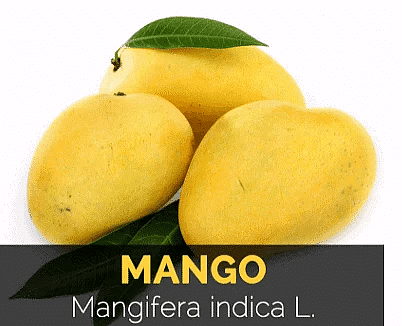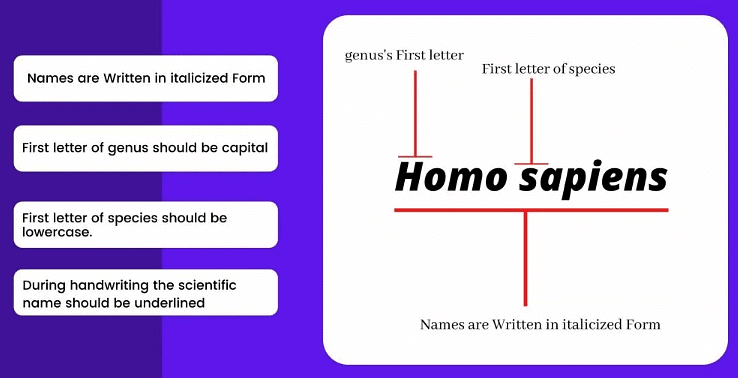The Living world 1 - From Past 28 Years Questions NEET Notes (2016-2025) | EduRev
2023
Q1: 'X' and 'Y' are the components of Binomial nomenclature. This naming system was proposed by 'Z':
(a) X - Generic name, Y - Specific epithet, Z - Carolus Linnaeus
(b) X - Specific epithet, Y - Generic name, Z - R.H. Whittaker
(c) X - Specific epithet, Y - Generic name, Z - Carolus Linnaeus
(d) X - Generic name, Y - Specific epithet, Z - R.H. Whittaker
Ans: (a)
In the binomial nomenclature system proposed by Carolus Linnaeus, 'X' is the generic name, and 'Y' is the specific epithet, which together uniquely identify a species.
Q2: House fly belongs to _______ family.
(a) Cyprinidae
(b) Hominidae
(c) Calliphoridae
(d) Muscidae
Ans: (d)
The house fly belongs to the Muscidae family, which is characterized by flies typically associated with humans and human habitations.
2022
Q1: In the taxonomic categories which hierarchical arrangement in ascending order is correct in the case of animals? [NEET 2022]
(a) Kingdom, Class, Phylum, Family, Order, Genus, Species
(b) Kingdom, Order, Class, Phylum, Family, Genus, Species
(c) Kingdom, Order, Phylum, Class, Family, Genus, Species
(d) Kingdom, Phylum, Class, Order, Family, Genus, Species
Ans: (d)
None of the options are matching with the language of the question.
The correct ascending order of taxonomic categories in case of animals is:
species → genus → family → order → class → phylum→kingdom
 |
Test: The Living World- 1
|
Start Test |
2021
Q1: Which one of the following belongs to the family Muscidae? [NEET 2021]
(a) Cockroach
(b) House fly
(c) Firefly
(d) Grasshopper
Ans: (b)
- Option (b) is correct because housefly belongs to the family Muscidae, class Insecta and phylum Arthropoda.
- Fire flies are placed in family Lampyridae of class Insecta.
- Grasshopper is also an insect placed in family Acrididae.
- Cockroach is also an insect placed in family Blattidae.
2019
Q1: Select the correctly written scientific name of Mango, which was first described by Carolus Linnaeus. [NEET 2019]
(a) Mangifera Indica
(b) Mangifera Indica Car. Linn
(c) Mangifera indica Linn
(d) None
Ans: (c)
- According to Binomial Nomenclature, the first word denoting the genus starts with a capital letter while the specific epithet starts with a small letter
Example: Scientific name of mango is Mangifera indica. - The author's name appears after the specific epithet, i.e., at the end of the biological name, and is written in an abbreviated form.
Example: Mangifera indica Linn. which indicates this species was first described by Linnaeus.

Q3: Which of the following is against the rules of ICBN? [NEET 2019]
(a) Handwritten scientific names should be underlined.
(b) Every species should have a generic name and a specific epithet.
(c) Scientific names are in Latin and should be italicized when printed.
(d) Generic and specific names should be written starting with small letters.
Ans: (d)
According to the international code for botanical nomenclature (ICBN), the first word denoting the genus starts with a capital letter while the specific epithet starts with a small letter.
 Option a,b and c are considered under the rules of ICBN.
Option a,b and c are considered under the rules of ICBN.
 |
Download the notes
NEET Previous Year Questions (2016-2024): The Living World
|
Download as PDF |
2016
Q1: Study the four statements (A - D) given below and select the two correct ones out of them.
(A) Definition of biological species was given by Ernst Mayr.
(B) Photoperiod does not affect reproduction in plants.
(C) Binomial nomenclature system was given by R.H. Whittaker.
(D) In unicellular organisms, reproduction is synonymous with growth.
The two correct statements are: [NEET 2016]
(a) B and C
(b) C and D
(c) A and D
(d) A and B
Ans: (c)
Photoperiod affects flowering and reproduction in plants. Binomial nomenclature system was given by Carolus Linnaeus.
Q2: Nomenclature is governed by certain universal rules. Which one of the following is contrary to the rules of nomenclature? [NEET 2016]
(a) Biological names can be written in any language.
(b) The first word in a biological name represents the genus name, and the second is a specific epithet.
(c) The names are written in Latin and are italicized when printed.
(d) When written by hand, the names are to be underlined.
Ans: (a)
Binomial nomenclature is a formal system of naming species of living things by giving each a name composed of two parts, both of which use Latin grammatical forms, although they can be based on words from other languages.
|
180 videos|367 docs|148 tests
|
FAQs on The Living world 1 - From Past 28 Years Questions NEET Notes (2016-2025) - EduRev
| 1. What are the main characteristics that define living organisms? |  |
| 2. How do living organisms interact with their environment? |  |
| 3. What is the significance of biodiversity in the living world? |  |
| 4. How do scientists classify living organisms? |  |
| 5. What are common methods used to study living organisms? |  |























